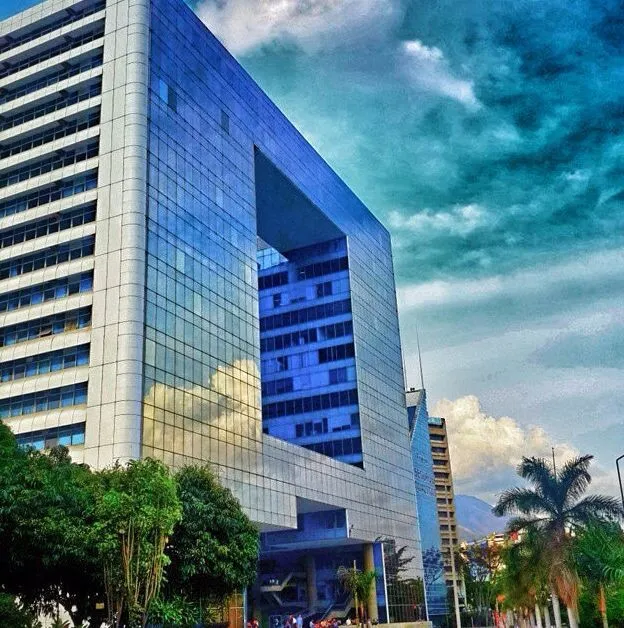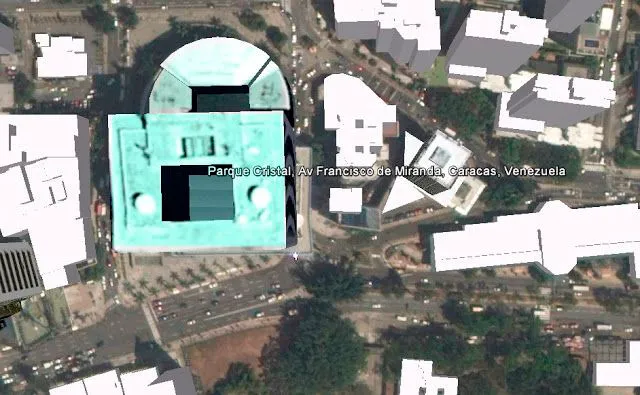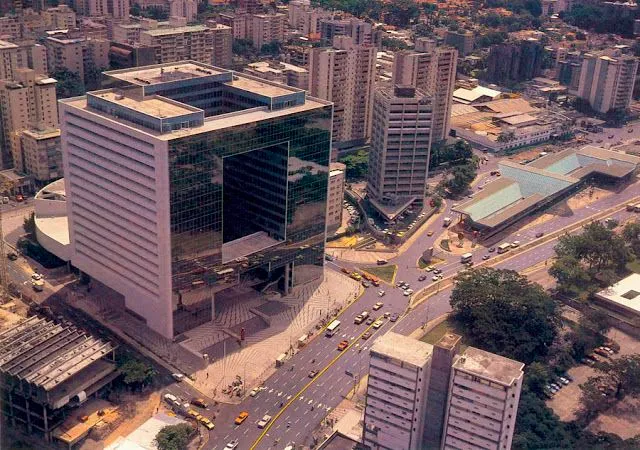Hello everyone, today I bring you another of my post from my section of foreign works that in one way or another have made cities, milestones and relevant points in the architecture of my country.
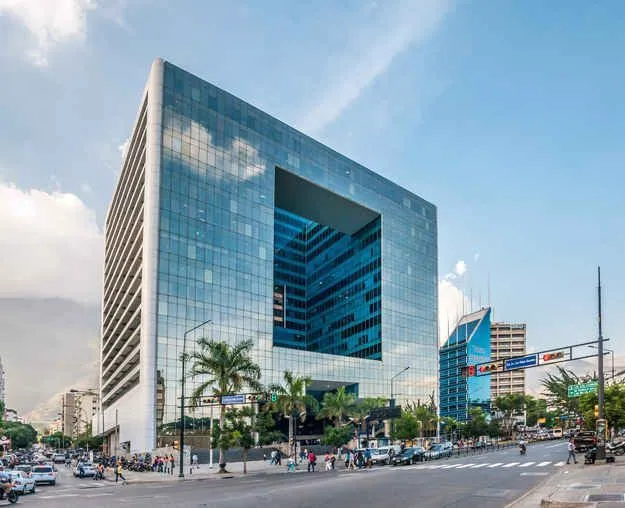
Pinterest https://pin.it/5zet4NZ
The architect Walter James Alcock Matos, also known as Jimmy Alcock, who embellished Caracas at the end of the 20th century with his most emblematic works are the Poliedro de Caracas and the Parque Cristal building.
"I was born and trained here, and I couldn't live in another country ... I have always believed that making a building is taking responsibility for the city ... Architecture is more of a formal approach than a technological feat, which does not mean that I do not know can intertwine ”.
A very outstanding work is Parque Cristal, it was created in 1986 and the construction of the Parque Cristal office building is completed, located on a plot of 13,667.75m² and winning in 1987 the price of metropolitan architecture. It occupies a complete block of the Los Palos Grandes urbanization of the Chacao municipality in Caracas.
The building has 4 basements for parking, 3 commercial levels, and 17 office floors.
The building that has a gas station and access to the Caracas metro, specifically the Miranda station. The entire access floor at the pedestrian level has a floor texture designed by the artist Nedo.
The tower was equipped on its east and west facades, those that receive the highest solar incidence, with brisolei lined in alucobond, while the north and south facades were protected with a special paper that allows light to enter the offices but prevents heating them, thus avoiding excessive light consumption.
In 1987 this building received the Metropolitan Prize for Architecture.
“When I say better, perhaps I am exaggerating, but it is a clear, simple architecture, with defined spatial concepts, using artisanal construction systems and materials from the site, without elaboration or pretensions. It is a work of craftsmanship rather than architecture, since its executors knew very well the handling of materials and work implements that had been transmitted for generations. I have deep respect for these artisans, who on many occasions have made me question my academic training. It is undoubtedly a lesson for architects excessively committed to technology, and it makes us reconsider the complexity with which we sometimes approach projects. It is a recognition of the country man, craftsman and in-depth connoisseur of his surroundings. Then, he describes another fundamental characteristic of this house, which is 3300 meters high, so its temperature is very cold, and even so, it contains an internal patio. This patio arms the house; it is a beautiful space. Despite the fact that sometimes the temperature at night falls below 0o C, it does not matter, because there is a fireplace in the rooms. In addition, at night, you can see the moon and stars, if it rains, you see the water fall, and when there is fog, it enters through the patio and is integrated into the house. Those climatic sensations are perceived through the internal patio; “If you are within four walls, you don't realize what is happening outside. So, the patio from the climatic point of view is perhaps not the most appropriate, but it is from the point of view of relationship with nature ”.
Architecture as art
Alcock says that it is a controversial question that is based on two tendencies, since it tends towards aestheticization of architecture through an attractive retinal composition without real compromises with the other determining factors in a project, such as functionality, for example. It is purely visual, aesthetic.
But beauty cannot be a goal. We cannot look for beauty as beauty in itself; is almost always a product of other, often prosaic concerns
However, Alcock considers that this tendency is not a defect, because “from the Hellenic times and through the times of Greece, it was the great exponent of the humanistic architecture of our civilization. It was an architecture of form, but it achieved a mathematical, geometric and sensitive beauty ”.
I will attach some videos of this great architecture
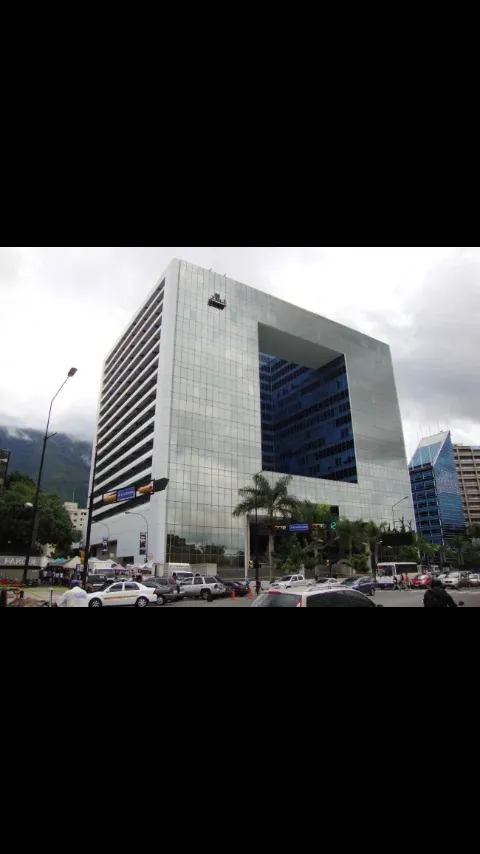
El arquitecto Walter James Alcock Matos, también conocido como Jimmy Alcock, que embelleció Caracas a finales del siglo XX con sus obras más emblemáticas son el Poliedro de Caracas y el edificio Parque Cristal.
“Nací y me formé aquí, y no podría vivir en otro país… Siempre he creído que hacer un edificio es asumir una responsabilidad con la ciudad… La arquitectura es más un enfoque formal que una proeza tecnológica , lo que no significa que no se puedan entrelazar ”.
Una obra muy destacada es Parque Cristal, se creó en el año 1986 se concluye la construcción del edificio de oficinas Parque Cristal, ubicado sobre una parcela de 13.667,75m² y ganando en 1987 el precio de arquitectura metropolitana. Ocupa una manzana completa de la urbanización Los Palos Grandes del municipio Chacao en Caracas.
El edificio tiene 4 sotanos de estacionamiento, 3 niveles comerciales y 17 pisos de oficinas.
El edificio que cuenta con una estación de gasolina y un acceso al metro de Caracas, específicamente la estación Miranda. Toda la planta acceso a nivel peatonal posee una textura de piso diseñada por el artista Nedo.
La torre fue dotada en sus fachadas este y oeste, las que reciben mayor incidencia solar, con unos brisolei forrados en alucobond, mientras que las fachadas norte y sur fueron protegidas con un papel especial que permite el ingreso de la luz a las oficinas pero evitan el calentamiento de las mismas, evitando así el consumo excesivo de luz.
En el año 1987 está edificación recibió el premio Metropolitano de Arquitectura.
“Al decir mejor quizás exagero, pero sí es una arquitectura clara, sencilla, con conceptos espaciales definidos, utilizando sistemas constructivos artesanales y materiales del sitio, sin rebuscamientos ni pretensiones. Es un trabajo de artesanía más que de arquitectura, pues sus ejecutores conocían muy bien el manejo de los materiales e implementos de trabajo que venía transmitiéndose por generaciones. Siento profundo respeto hacia esos artesanos, quienes en muchas ocasiones me han hecho cuestionar mi formación académica. Sin duda es una lección para los arquitectos excesivamente comprometidos con la tecnología, y que nos hace recapacitar sobre la complejidad con que a veces enfocamos los proyectos. Es un reconocimiento al hombre de campo, artesano y conocedor a fondo de su entorno. Luego, describe otra característica fundamental de esta casa, que se encuentra a 3300 metros de altura, por lo que su temperatura es muy fría, y aún así, contiene un patio interno. Este patio arma la casa; es un espacio bello. A pesar de que a veces la temperatura en la noche llegue a bajo 0o C, no importa, porque en las habitaciones hay chimenea. Además, en las noches, se ven la luna y las estrellas, si llueve, se ve caer el agua, y cuando hay neblina, entra por el patio y se integra a la casa. Esas sensaciones climáticas se perciben a través del patio interno; “si estás entre cuatro paredes, no te das cuenta de lo que está pasando afuera. Entones, el patio desde el punto de vista climático no es quizás lo más adecuado, pero sí desde el punto de vista de relación con la naturaleza”.
Arquitectura como arte
Alcock dice que es una pregunta polémica que se basa en dos tendencias, ya que tiende hacia estetizacion de la arquitectura a través de la una atractiva composición retiniana sin verdaderos compromisos con los otros factores determinantes en un proyecto, como podría ser por ejemplo la funcionalidad. Es puramente visual, estética.
Pero la belleza no puede ser un objetivo. No podemos buscar la belleza como belleza en sí; es casi siempre un producto de otras preocupaciones, a menudo prosaicas
Sin embargo, Alcock considera que esta tendencia no es un defecto, porque “desde la época helénica y a través de los tiempos de Grecia, fue la gran exponente de la arquitectura humanística de nuestra civilización. Era una arquitectura de la forma, pero que logró una belleza matemática, geométrica y sensible”.
Anexaré algunos videos de esta gran arquitectura


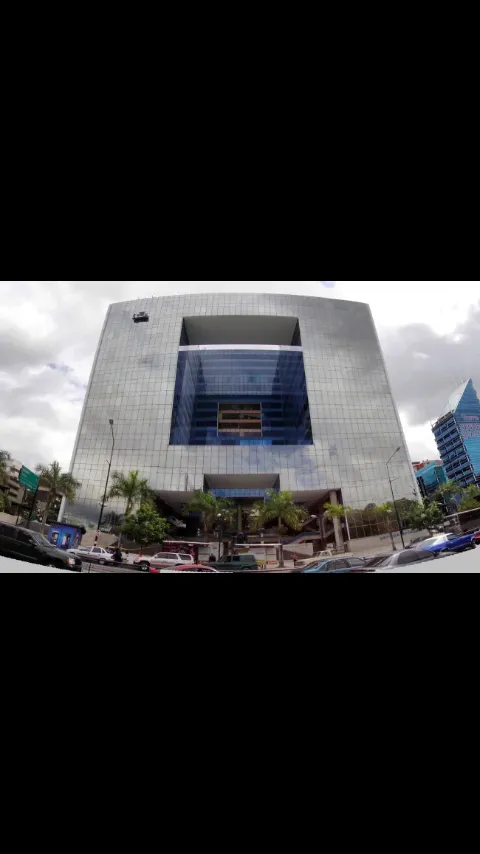
https://construidoencaracas.wordpress.com/2013/06/22/parque-cristal/

